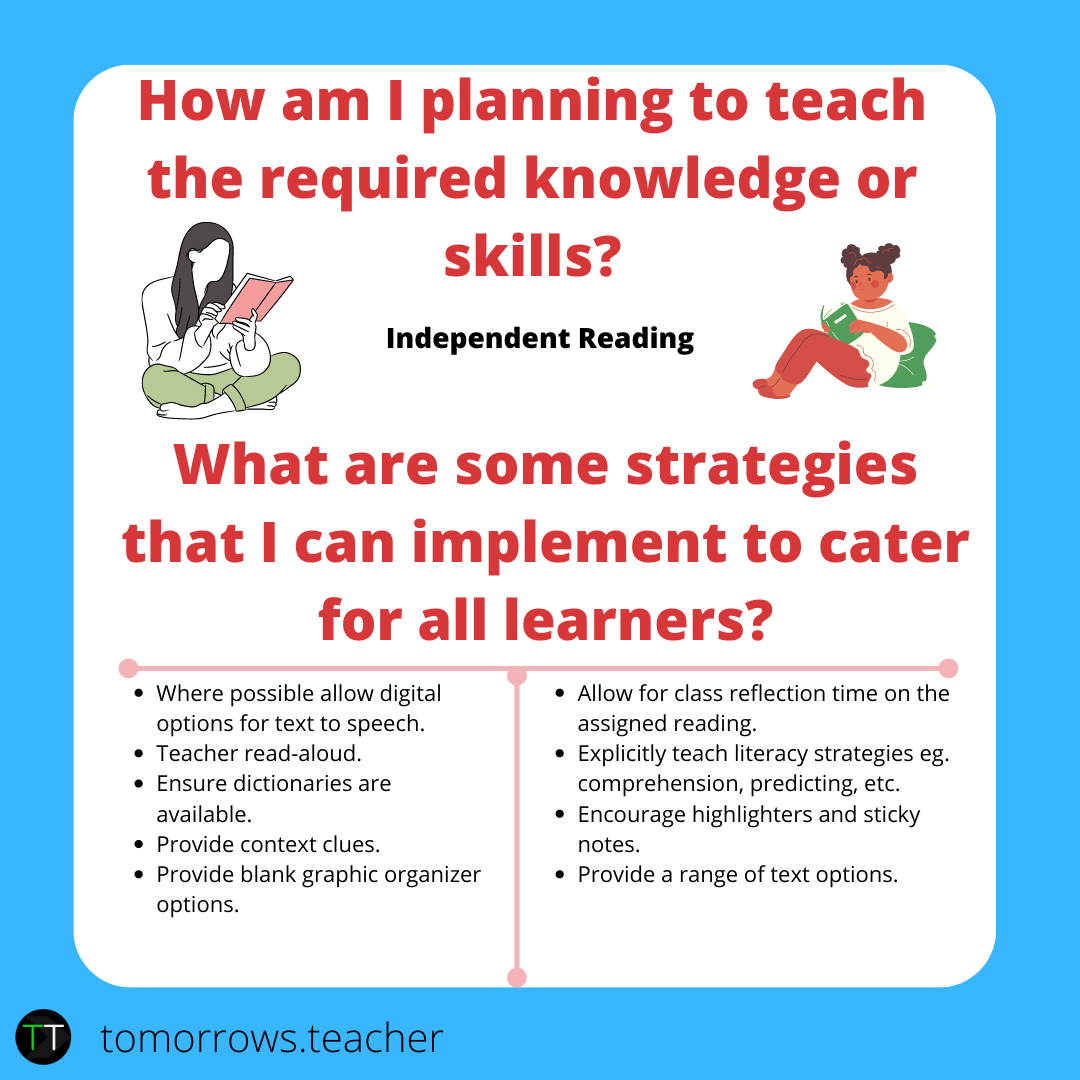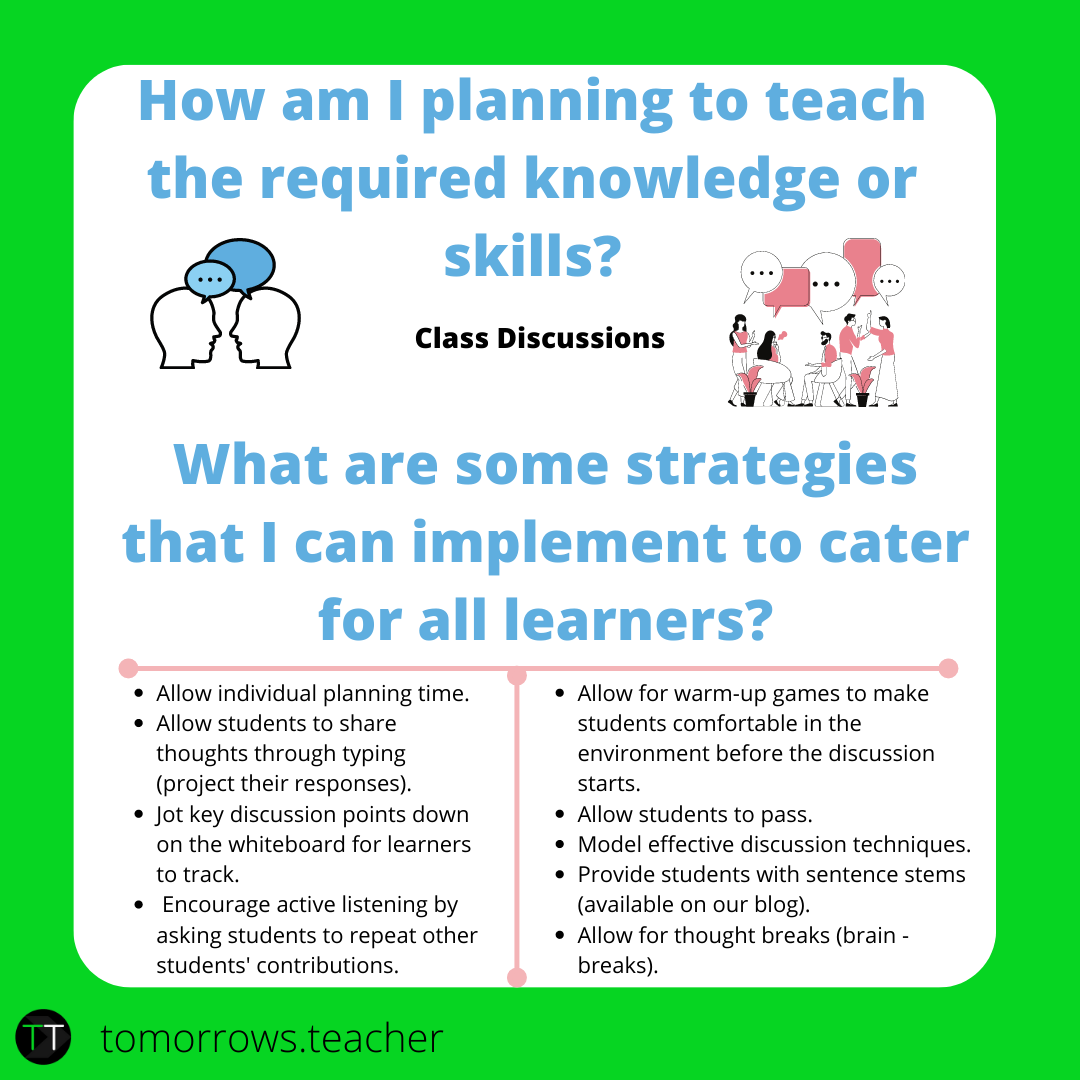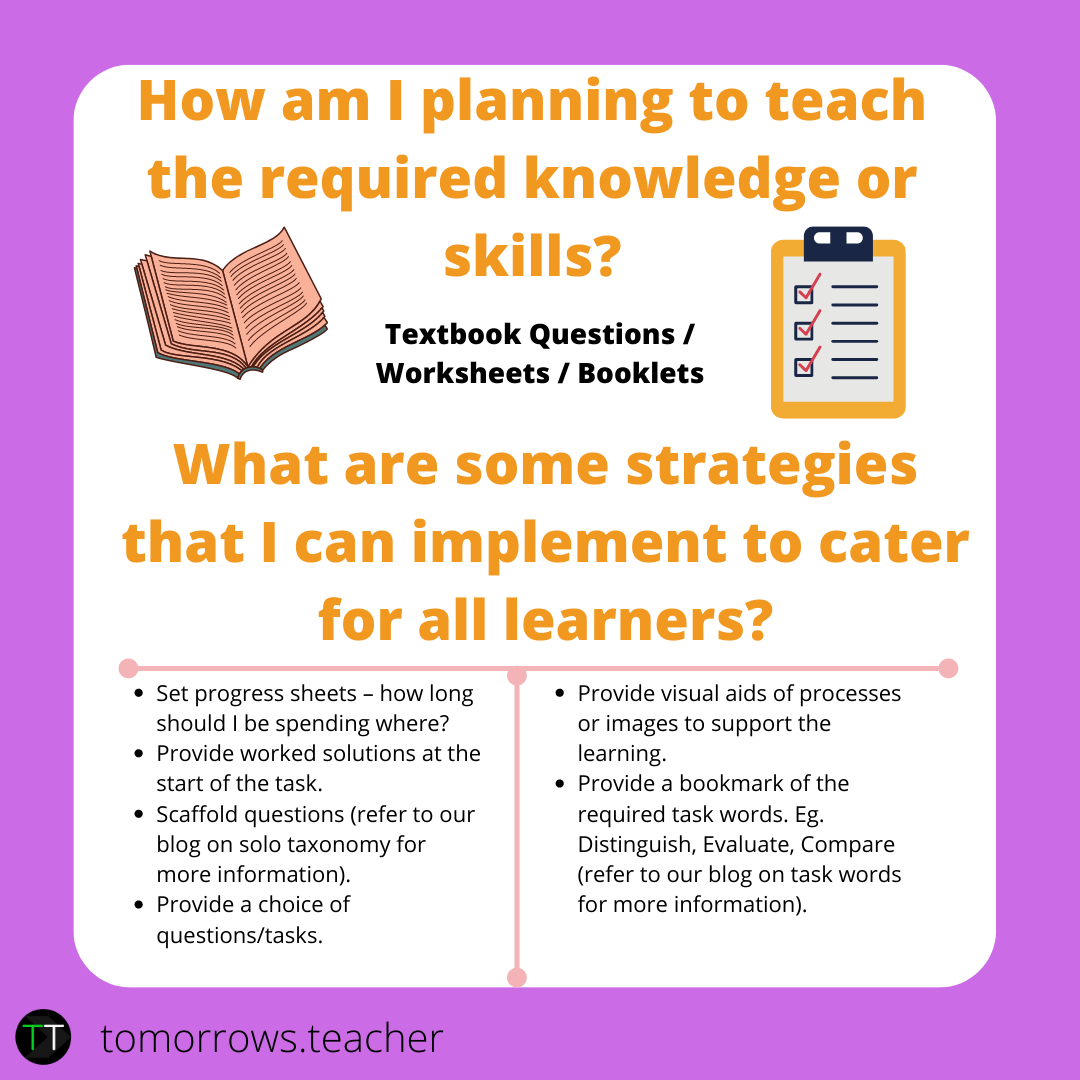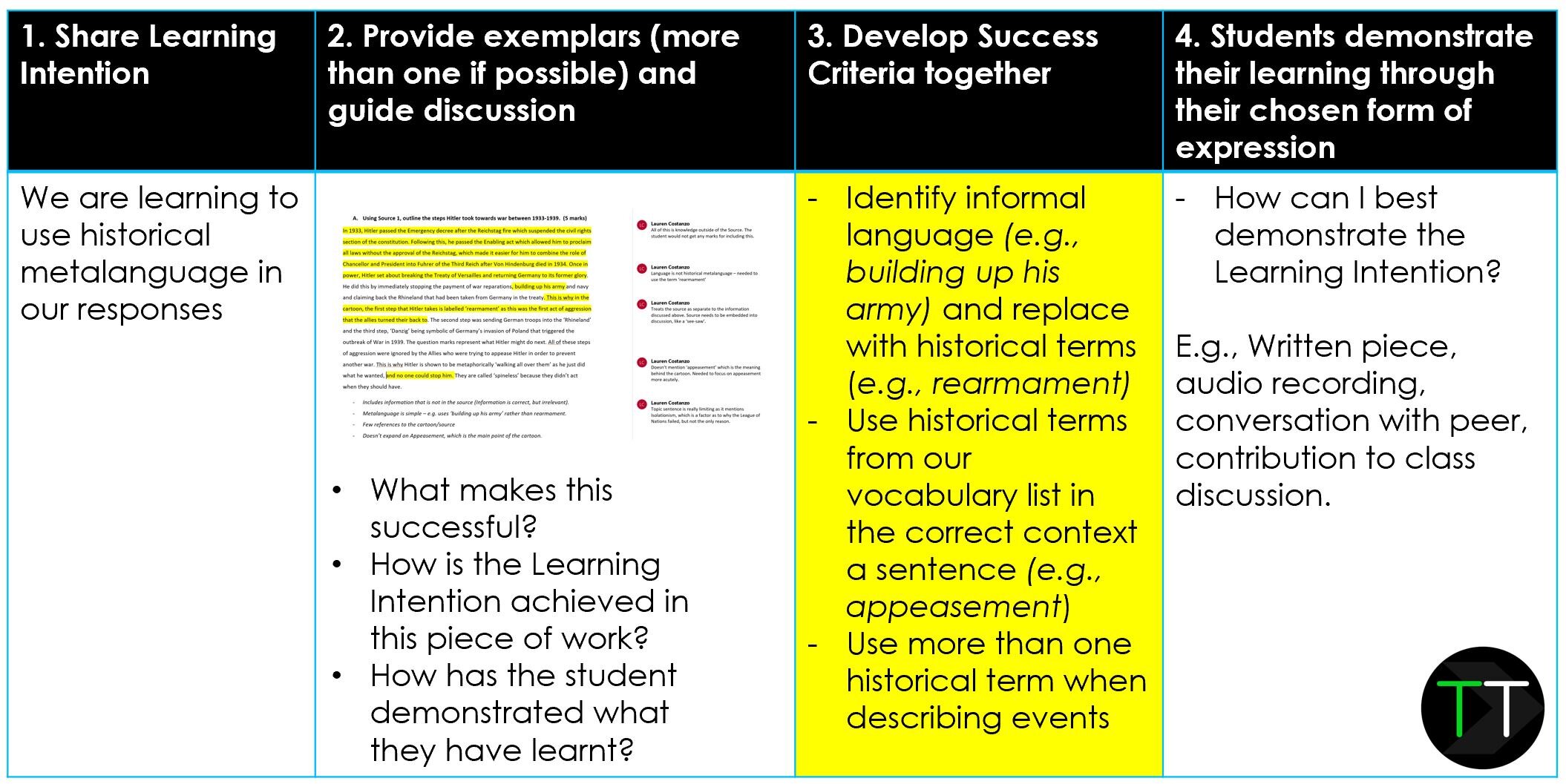Catering for all
A curriculum that caters for all is our ultimate goal, but at times can seem like an impossible task when unit and lesson planning. Our classrooms are made up with often 25+ different people with a diverse range of personalities, needs, cultural and social backgrounds. They enter our classrooms on any given day and bring with them whatever is going on in their home or social lives. Our young people have different attitudes to learning - some may persevere, where others may give up early. A student who perseveres one day may not persevere through a difficult task the next day for a range of different reasons. As well as this, they also have different abilities and skills that may affect how they participate in our classes. This is what makes planning differentiated lessons seem like a lot of time, effort, and work. Our goal is to make differentiated learning more attainable and effective, without adding pressure on time-poor teachers.
Firstly, we need to form a common understanding of what the term differentiation means in our individual school context. Often, it is viewed as a learning continuum with support needed for low achievers and extension needed for high achievers. Put simply, it’s making the work a little easier, and a little harder. But is that all differentiation is - support and extension? Are we differentiating our classroom when we provide a lesson that caters to those at, above, or below the expected level?
Catering to different ability levels is certainly a starting point and something that we find that many teachers do well. But we would argue that differentiation needs to be more than that. The connotations of the word itself - different - is perhaps where we can come undone. Teachers recognise that their classes are made up of individual personalities, backgrounds, and skill levels, but know it is near impossible to provide an individual learning plan to every student, every single lesson, which includes alternate work and activities. We need to reframe our thinking and focus on providing an accessible and equitable curriculum that does not single anyone out as being different but rather focuses on inclusivity. A differentiated curriculum should aim to remove the many barriers that impact our learners, not emphasise them. These barriers do include the range of levels of skills, knowledge, and ability our students bring to our classrooms, but they are more than that - the barriers can also be cultural, social, environmental, psychological. A culturally and socially inclusive curriculum that provides opportunities for all students to participate and learn by removing barriers associated with religion, language, disabilities, gender, and sexuality is just as important as a curriculum that caters to different learning abilities. We need to move beyond differentiation as a checkbox (caters to students working at, above, or below the level) and do more than just accommodate for the variety of different learners in our classroom. We need to include.
Here are some strategies to do this:
1. Food for thought
We have all heard of the phrase “caters to all”. Thinking of our lessons in terms of catering is a good way to understand how we could improve our approach to lesson planning. A few years ago, I attended a PD (I apologize I forget which one) where they used the analogy of a dinner party to describe a better approach to differentiation. When hosting a dinner, we consider the range of dietary requirements of our guests - vegan, gluten-free, lactose-free, allergies. We plan our meal accordingly and instead of cooking eight different meals to cater to the diverse eaters we are hosting (which would take days of preparation!), we find and cook one or two options that are accessible to all those in attendance. If a guest has no dietary requirements, they are not given separate food and singled out. If a guest has a dietary requirement, the food suits their needs. What is good for some, or one, is good for all. Everyone can share the food and leave satisfied.
Now take this analogy and apply it to a classroom context. In our classroom, assume we have students with auditory processing disorder. To include them in our lesson, we would play all videos with captions on. We would give access to written transcripts of audio where possible. We would also ensure that we provide a visual representation of information, either in whiteboard notes, diagrams, PowerPoints, or handouts. However, we don’t just use these strategies with this one student. These strategies would help all students, including those with language barriers, vision impairments, and even those who may be particularly distracted that day.
A student whose second language is English may benefit from clarification of terms and definitions. This would also be advantageous to all.
A student with dyslexia may benefit from a different sized font or colour, or access to text-to-voice technology. This would also be advantageous to all.
If we know our students, we can plan our lessons to remove the barriers so that everyone has access to the same “meal”. The benefit of providing accessibility to a range of learning tools to all students means that they will also have the opportunity to self-regulate their own learning and choose the strategy, tool, or approach that best works for them on any particular day. We have compiled some strategies below to help you cater for all learners without creating an entire lesson for each individual student. It is important to remember that in order to differentiate effectively, your curriculum needs to be planned with flexibility in mind. Vary the materials you use and the method you use to teach each lesson as this will allow multiple entry points for all learners to succeed.
2. Go Digital.
Technology can translate, enlarge text and change the font of what we view online. If we provide editable resources for our learners, they can do the same.
Technology allows students to research at greater depths, look up images, watch videos and seek help. Where possible, give students digital access to resources so they can use technology to help them.
Microsoft has a suite of digital learning tools that are beneficial to all students; not just students with learning needs. Some worth trying include:
Learning Tools and Immersive Reader: These are a built-in feature in Word and OneNote for Windows 10 but can be downloaded as an add-in for OneNote 2016 here. It allows students to customise their screen by changing the spacing between words, changing colour of the screen, and even highlighting parts of speech such as nouns and verbs. A built-in ‘read aloud’ feature tracks the words across the screen as it speaks. Try it by clicking ‘view’ and ‘Learning Tools’ on Word or the ‘Learning Tools’ tab on OneNote. Learn more about Learning Tools through this video.
Whiteboard is an app that converts your screen to a whiteboard – download it here. You can ink or type on your tablet and it will project to the whiteboard. The best part is that you can add students to the whiteboard as collaborators, and they too can edit the whiteboard from their tablets in real-time. After you have finished, you can save the screen as an image or download it to OneNote – a great way to keep track of board notes throughout the year.
PowerPoint Translator is an add-on to the normal PowerPoint program which enables voice translation to be added to slides on the go. Available under the SLIDE SHOW Tab the language and location options are easy to set up. After the initial set, all the presenter needs to do is speak and the text is added to the slides.
3. Co-create success criteria
Whilst a Learning Intention or goal can be universal, it’s important to remember that how students get there, or how they present their learning, may look different. The Universal Design for Learning (UDL) framework describes this as providing multiple means of ‘Action and Expression’. This means that how students express what they know may look different. The challenge for teachers here is providing transparency of the skills and knowledge that need to be demonstrated for any particular learning intention.
This is where we find co-creating Success Criteria to be beneficial. Involving students in this process ensures that no matter the form of expression, students know how to demonstrate development towards the learning intention. Co-constructed success criteria are best developed alongside an exemplar piece of work, or several pieces if you have them. Provide students with exemplars and identify the skills and knowledge that have been demonstrated, even if they are represented differently.
For example, in History, our Learning Intention is to use historical metalanguage in our responses. You will notice here that the type of response is not specified, as students could demonstrate this in a range of ways. When co-constructing success criteria, I would provide students with a written sample, and an audio sample (even if it is a read-aloud or a class discussion). Together, we would articulate what we will need to do to be successful.
4. Always make learning relevant.
We don’t want our students to believe that the only reason they are learning something is so they can be tested on it. Students need to be able to find connections to why a topic is being taught and how this knowledge or skill may help them in their everyday lives. Where relevant and possible, try to bring the real world into your classroom by tapping into events, news, and topics that are of interest to them.
It is imperative that all teachers help students see the importance of why learning is occurring. Some students can spot this themselves… but remember, what is good for some, is good for all, and there will be some students who can’t find relevance with what they are learning. It is our job to help them see this.
Beyond this, it is also important for students to remain informed citizens about world events. Where possible, bring current affairs into your learning sequences to help students engage, build empathy and collective understanding at a global level.
RESOURCES:
If you would like some more information and resources regarding differentiated learning, we recommend you check out the following:
Carol Tomlinson (2014), The Differentiated Classroom: Responding to the Needs of All Learners, ASCD (book)
Universal Design For Learning, 2021 (website)
DET, High Impact Teaching Strategies In Action: Differentiation, 2019 (website)
Microsoft, Differentiation in the Classroom using the built-in tools in Microsoft 365 and Office, 2021 (online course, 1 hour)
Please share this blog with your colleagues if you think they will find it useful and leave a comment below with any strategies that work for you.








